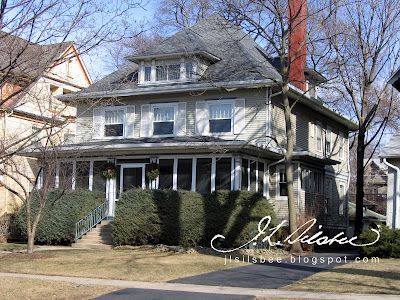Several years ago, I had the pleasure of visiting this home in Evanston and meeting the owners. One of their remarks sticks with me. The wanted to have a sign on their home stating that "on this date in history nothing happened here". They had been told by an architecture historian that their home had no historical value. It was plain-looking, wasn't designed by a well-known architect and no one famous lived there.
The notion struck me as funny. I knew who designed it and considered that somewhat important. Even if the home were not designed by Joseph Silsbee, I thought it was a nice, though simple, example of Classical Revival architecture and an unusually large iteration of an American Foursquare. Having been able to examine the home closer, I now realize how interesting it actually was and how much the average viewer might be missing. The home was designed for grain trader, John Fyffe. Fyffe was Dublin-born and moved to Chicago in 1879. He married the sister of wealthy grain merchent and Silsbee client, William Bartlett. Fyffe commissioned Silsbee at the end of 1892 and the home was completed in 1893.
Clad in thin clapboard, the Fyffe home is unlike many of his other homes of this nature in that it is relatively modest in size and symmetrically arranged. It is carefully detailed with classical elements including pilasters in the central dormer, columns that support the front porch and a belt-course composed of dentils and bead molding. Built during the World's Columbian Exposition, it is a good but rare example of Silsbee's work in this style and period.
Take a closer look at a non-historic house today. You might be surprised with what you see.



No comments:
Post a Comment